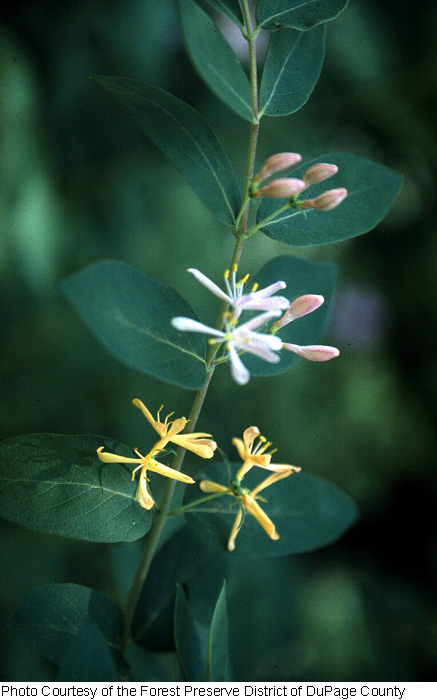Perennial woody vine
Stem: hairless.
Leaves: opposite, with a waxy coating (glaucous) above. The lower broadly oval, stalkless, 4 - 8 cm long, and blunt to notched. The uppermost two to four pairs of leaves are fused into a glaucous, almost orbicular disk.
Flowers: borne in clusters (spikes) at branch tips. Spikes with two to four whorls of flowers. Calyx short, five-lobed. Corolla strongly two-lipped, pale yellow, 2 - 3 cm long, tubular, five-lobed, hairy inside. Corolla tube nearly equaling lips. Stamens five. Style hairy.
Fruit: a few-seeded berry, in clusters, red, rounded.
Similar species: Lonicera x heckrottii and L. sempervirens are similar but their corollas grow over 3 cm long. Lonicera dioica differs by having reddish flowers and non-glaucous upper leaves bearing pointed, not rounded, tips.
Flowering: late May to early July
Habitat and ecology: A common sprawling and clambering honeysuckle of moist woods and thickets, often found in calcareous soils.
Occurence in the Chicago region: native
Etymology: Lonicera is named after Adam Lonicer (1528-1586), a German botanist and author. Prolifera means "producing side shoots in order to increase."
Author: The Morton Arboretum

